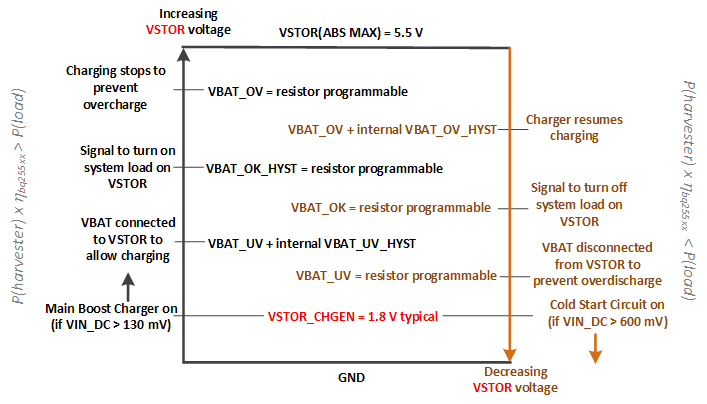ZHCS015G october 2011 – august 2023 BQ25504
PRODUCTION DATA
- 1
- 1 特性
- 2 应用
- 3 说明
- 4 Revision History
- 5 说明(续)
- 6 Pin Configuration and Functions
- 7 Specifications
- 8 Detailed Description
- 9 Application and Implementation
- 10Power Supply Recommendations
- 11Layout
- 12Device and Documentation Support
- 13Mechanical, Packaging, and Orderable Information
8.3.4 Battery Voltage in Operating Range (VBAT_OK Output)
The IC allows the user to set a programmable voltage independent of the overvoltage and undervoltage settings to indicate whether the VSTOR voltage (and therefore the VBAT voltage when the PFET between the two pins is turned on) is at an acceptable level. When the battery voltage is decreasing the threshold is set by Equation 4:

When the battery voltage is increasing, the threshold is set by Equation 5:

The sum of the resistors are recommended to be approximately 10 MΩ i.e., ROK1 + ROK2 + ROK3= 10 MΩ. Spreadsheet SLURAQ1 provides help on sizing and selecting the resistors.
The logic high level of this signal is equal to the VSTOR voltage and the logic low level is ground. The logic high level has ~20 KΩ internally in series to limit the available current to prevent MCU damage until it is fully powered. The VBAT_OK_PROG threshold must be greater than or equal to the UV threshold. Figure 8-1 shows the relative position of the various threshold voltages.
 Figure 8-1 Summary of VSTOR Threshold Voltages
Figure 8-1 Summary of VSTOR Threshold Voltages